Collaboration
How to easily share digital assets: fast & secure methods
November 2025
7 mins

Table of contents
- Why sharing digital assets can be tricky
- What to look for in tools to share digital assets
- Best way to share digital assets: top options for creative teams
- 6 tips to make sharing digital assets more efficient
- Minute Media: from shipping drives to sharing in seconds
- How teams and clients benefit from easy sharing
Your files, faster.
Access any file instantly, anywhere. Collaborate in real-time from one always-up-to-date, secure cloud filespace.
Nothing slows your team like stalled uploads and outdated files.
It might sound simple, but knowing how to share digital assets the right way can make or break your creative workflow.
A 4K video that hijacks your afternoon, a design export that won’t sync or a client grabbing the wrong pitch deck can throw your whole schedule off track.
These delays derail campaigns, confuse stakeholders and frustrate freelancers.
Here are tips and tricks on how to share digital assets efficiently, securely and without the usual chaos, so your team can stop worrying about file admin and get back to the creative work that matters.
Why sharing digital assets can be tricky
On paper, file sharing sounds simple: drag, drop, done. But if you’ve ever tried to send a chunky video file or a layered design export, you know it’s rarely that easy.
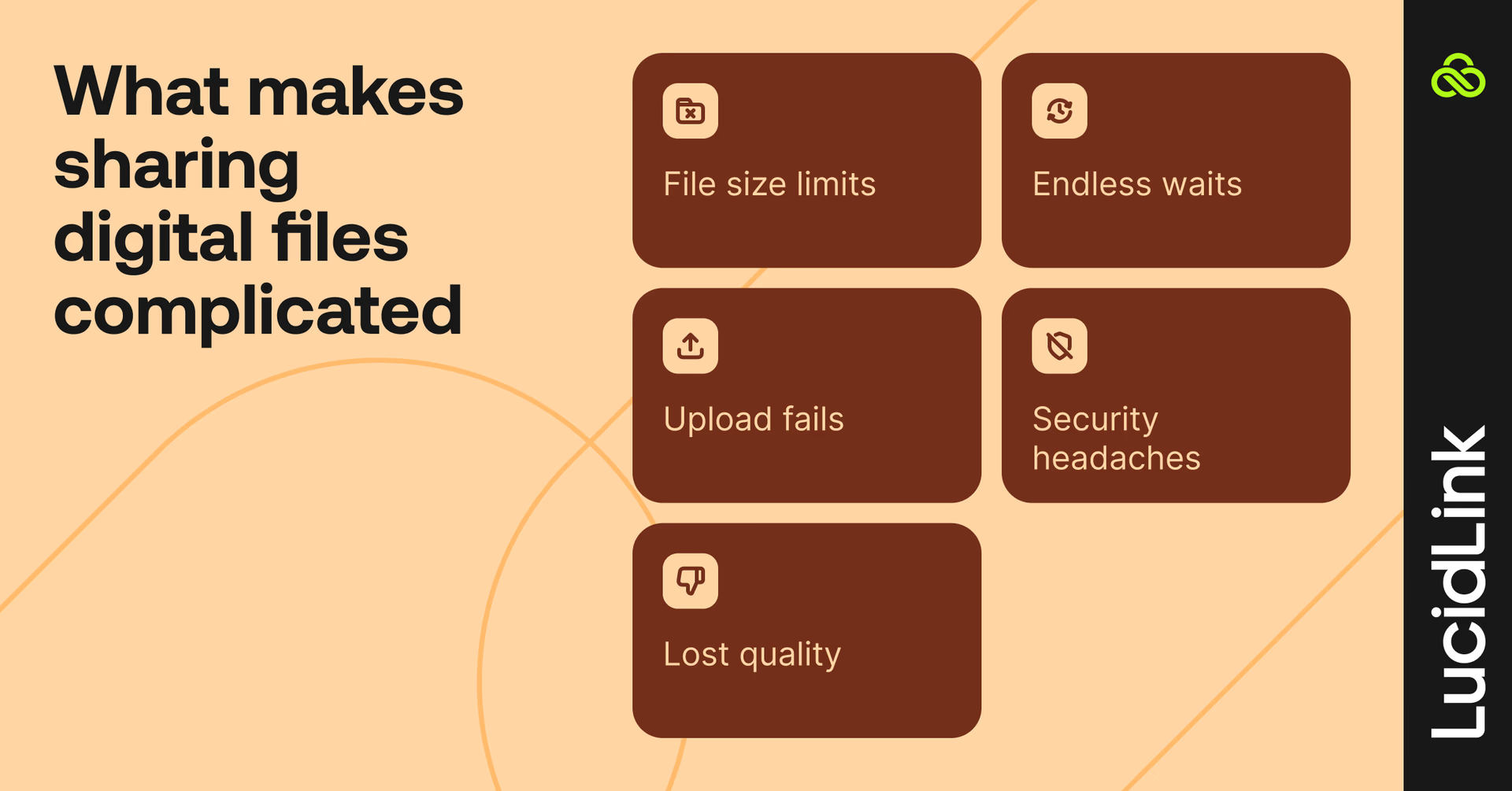
Here’s what creative and marketing teams actually run into:
File size limits: email caps out at ~25MB. That’s not even one Photoshop file.
Endless waits: a single 4K video upload can eat up your entire afternoon.
Upload fails: one blip in your Wi-Fi, and it’s back to square one.
Security headaches: if you’re in industries like finance, healthcare or media, compliance rules mean extra hurdles.
Lost quality: sending compressed files often means clients don’t see the original quality. Knowing how to share videos without losing quality is essential to keeping projects on track.
Throw in ProRes exports or full campaign packages, and it’s clear: traditional sharing methods just weren’t built for today’s creative work.
The solution? Tools designed with creative workflows in mind.
Here’s what to look for when choosing a file-sharing solution.
What to look for in tools to share digital assets
If you want a smooth creative workflow, your file-sharing tool needs to do more than just “move files.”

It should take those everyday frustrations and flip them on their head. Look for tools that:
Ditch size limits: so even your largest video exports glide through, no compression required.
Keep things moving fast: uploads and downloads that match the pace of your deadlines.
Make sharing effortless: clients and collaborators can access files instantly, without tech headaches.
Lock it down with security: end-to-end encryption keeps you compliant and worry-free.
Support real-time collaboration: no more waiting for a transfer before you can start working.
Stay organized with version control: because no one wants to waste time untangling “final_v3_reallyFINAL.”
Get the setup right and your team moves at the speed of ideas, not uploads.
Now that you know what to look for, let’s check out some of the best ways (and tools) you can use to share your digital assets.
Best way to share digital assets: top options for creative teams
No two teams work the same way, and every way of sharing digital assets has its trade-offs. Some are quick, some are secure and some just make life easy.
Here’s the breakdown.
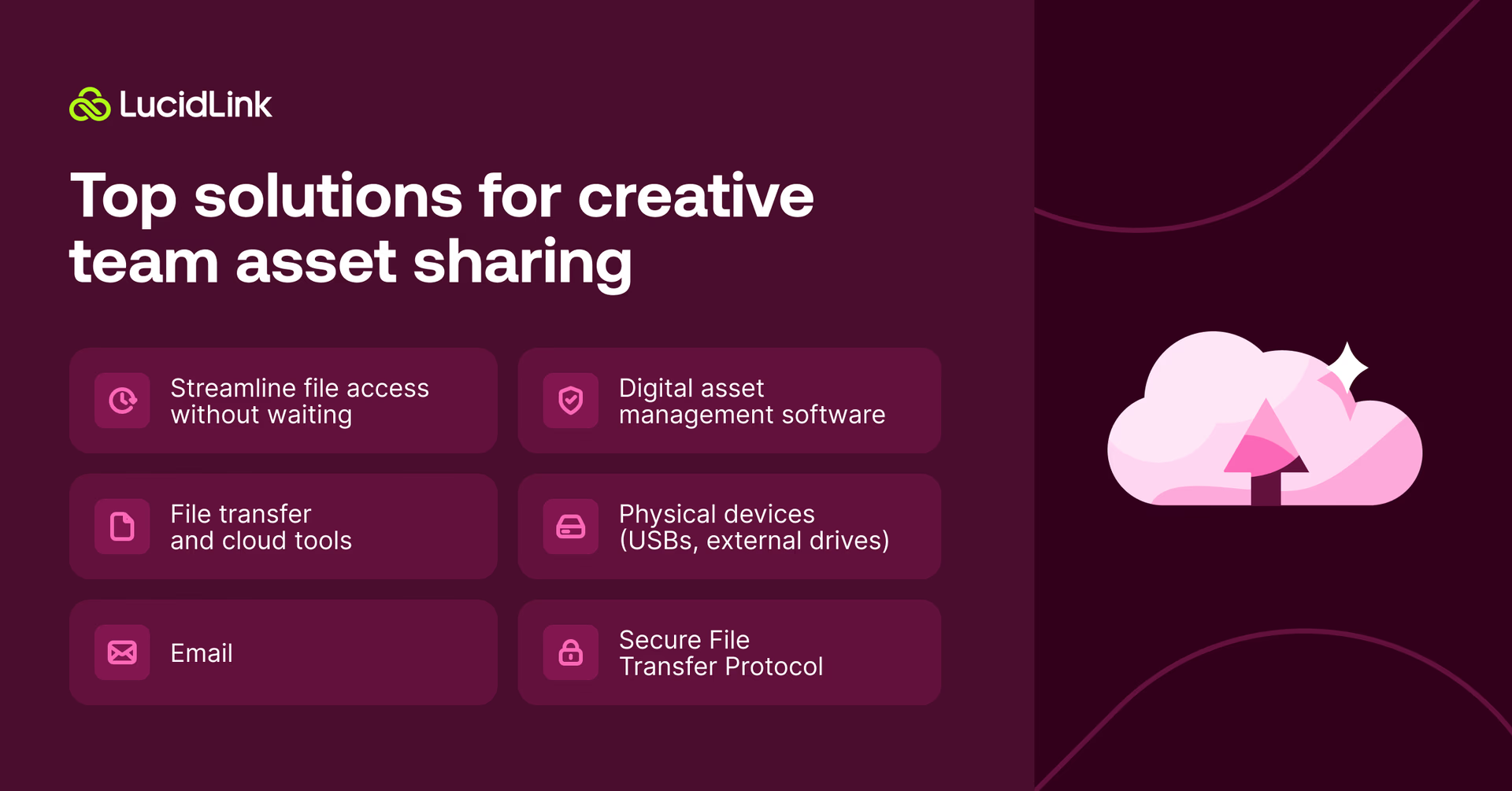
LucidLink: streamline file access without waiting
LucidLink changes how you manage and share creative assets. Its media cloud storage solution lets your team access large files instantly, keeping your marketing workflow fast and collaborative.
Work with large files instantly, like they’re on your local drive
Stream only what you need, ideal for large video or audio projects
Supports all file types: video, design, project files and more
Real-time collaboration across teams and clients
Fully encrypted and scalable
For your team, this removes the bottlenecks of traditional file transfers.
Digital asset management (DAM) software
DAM platforms like Bynder, Brandfolder or MediaValet provide centralized libraries for creative asset management, helping teams store, organize and access files securely in the cloud.
They’re especially valuable for remote collaboration, since assets can be retrieved instantly from anywhere.
Pros:
Centralized storage and easy retrieval
Strong collaboration features
Enhanced security and permissions
Scalable with cloud storage and API integrations
Cons:
Upfront investment
Requires training and adoption
Metadata setup and taxonomy management can be complex
File transfer and cloud tools
Popular platforms like Google Drive, Dropbox and WeTransfer are often the first choice because they’re simple and inexpensive. While they are great for quick handoffs and even for large-scale collaboration, they can fall apart when you’re dealing with massive media files.
Pros:
Affordable and widely available
Easy to share via links
Often already integrated into workflows
Cons:
File size limits
Limited control once files are shared
Versioning issues can cause confusion
Dependent on internet access
Physical devices (USBs, external drives)
Despite the shift to cloud, some teams still rely on physical media for massive files or offline environments.
Pros:
No subscription fees
Offline access
Simple “plug-and-play” usability
Useful as a backup option
Cons:
Files must be physically shared
Lost devices = lost data
Limited storage capacity
Security risks from malware or theft
SFTP (Secure File Transfer Protocol)
SFTP is a long-standing method for moving files securely, especially in industries where compliance is non-negotiable. It’s favored by IT teams and organizations handling sensitive data because of its reliability and encryption standards.
While it’s rock-solid for security, it’s not the most user-friendly option for everyday creative collaboration.
Pros:
Highly secure with strong encryption
Reliable and trusted for regulated industries
Ideal for sensitive or confidential files
Cons:
Requires technical setup and expertise
Not intuitive for non-IT users
Lacks collaboration features like versioning or real-time access
Still one of the most common methods, email services like Gmail or Outlook are convenient but not designed for heavy digital asset workflows.
Pros:
Universally accessible
Easy for small files and quick exchanges
Cons:
File size restrictions (25MB for most platforms)
Major security risks
Chaos with version control
No centralized storage or organization
6 tips to make sharing digital assets more efficient
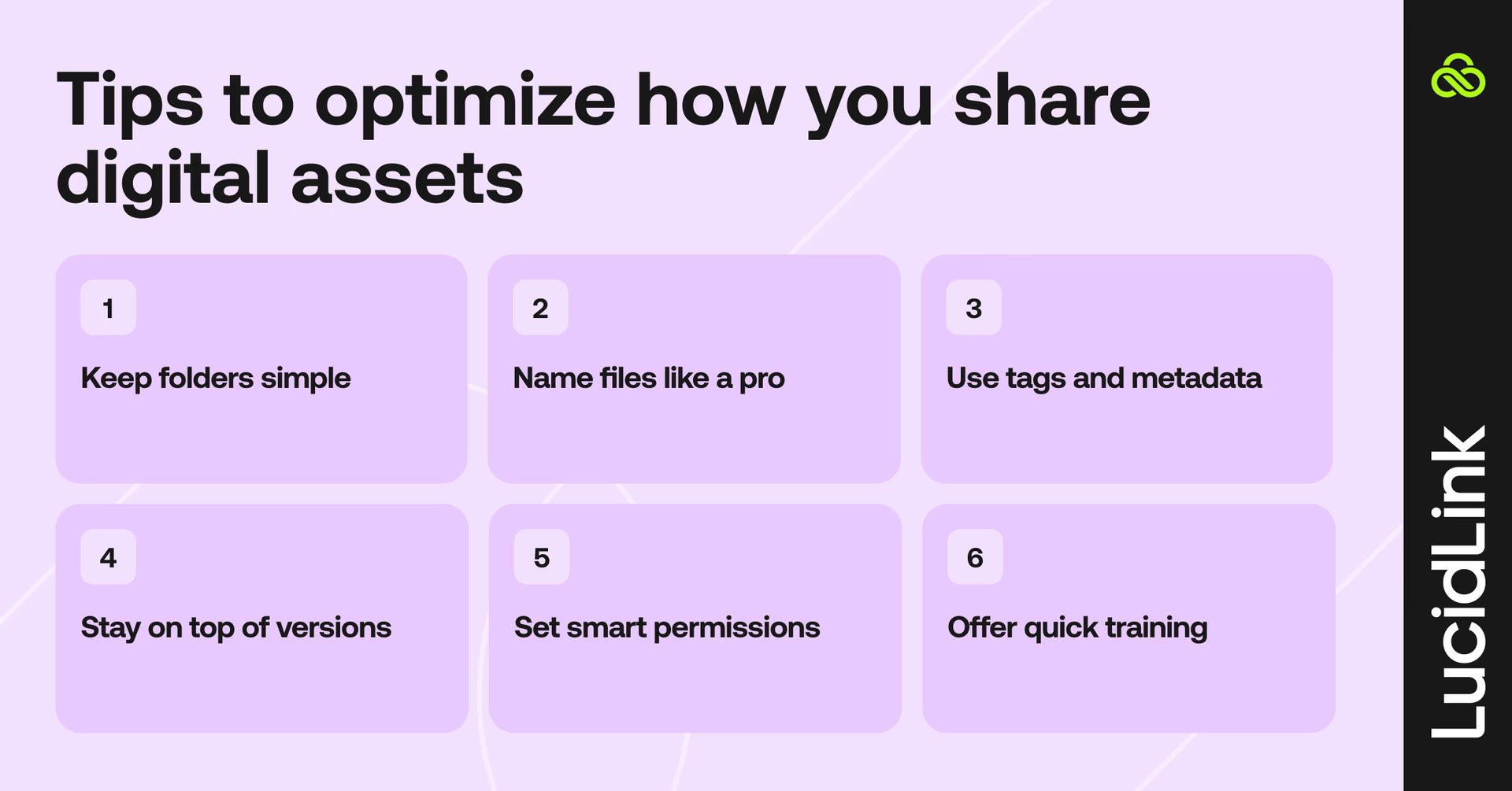
Collaboration gets a whole lot easier when everyone’s on the same page. Even a bit of structure makes a big difference. Try these tips to keep sharing digital assets stress-free:
Keep folders simple: aim for no more than three levels. The fewer clicks it takes to find a file, the better.
Name files like a pro: project name + file type + version number = instant clarity. No more “final_v2_reallyfinal_EDIT.”
Use tags and metadata: consistent labeling makes searching faster and keeps your library organized.
Stay on top of versions: version control prevents duplicate edits and ensures everyone’s working on the latest file.
Set smart permissions: read-only, time-limited or role-based access keeps files secure while giving the right people what they need.
Offer quick training: even the best system only works if people know how to use it. A short guide or walkthrough can save endless headaches.
When your team follows the same playbook, sharing and organizing marketing assets becomes faster, easier and more secure.
Good habits like consistent naming, version control and smart permissions are essential to make marketing asset management work, whether you’re on a full-scale DAM platform or just a tidy cloud drive.
Minute Media: from shipping drives to sharing in seconds
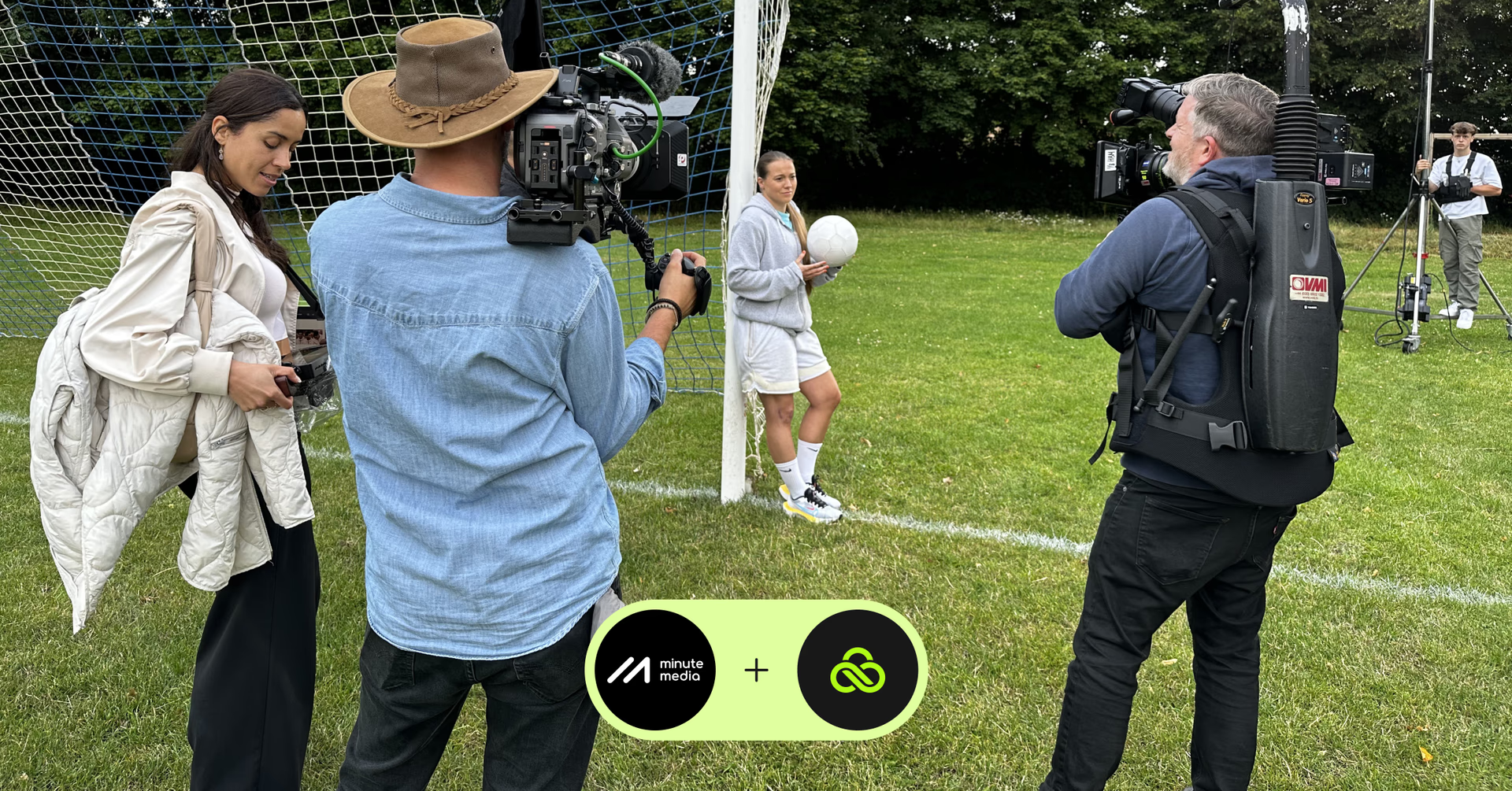
For Minute Media, a global sports media powerhouse with brands like Sports Illustrated and The Players’ Tribune, video is at the center of their storytelling.
But as the company scaled, they kept hitting the same snag: how to easily share digital assets across teams, time zones and productions.
The challenge: moving massive files across a global team
As video projects grew in size and complexity, so did the challenges of moving assets. Editors relied on RAID drives, Google Drive and even couriers to deliver footage.
“Managing huge files across locations became a real challenge,” recalls Hagai Lazar, VP of Global Video Production. The team even resorted to sending hard drives by Uber, a workaround that quickly proved unsustainable as Minute Media scaled.
The pandemic made the cracks even more obvious. Overnight, Minute Media’s teams needed a way to collaborate remotely without wasting hours waiting on uploads, downloads or failed transfers.
The solution: LucidLink makes asset sharing instant
When the team switched to LucidLink, everything changed. Instead of juggling multiple tools or shipping physical drives, they could upload once and give instant access to collaborators anywhere in the world.
“With LucidLink, we upload files to the cloud and work directly from there. There’s no downloading and syncing, making it much easier to manage large files and we don’t need to ship physical hard drives," explains Hagai.
Minute Media even replaced Google Drive with LucidLink, moving both current projects and archives into one centralized cloud space.
The results: asset sharing without stress
Today, Minute Media’s editors collaborate in real time, no matter where they are. Files stream instantly from LucidLink, letting multiple editors jump into the same project without waiting for transfers.
That agility paid off during a Women’s World Cup project with Kia:
Footage shot in LA and Reading (UK) was edited across time zones simultaneously
Extra footage filmed in Australia was added seamlessly
The final cut was delivered to Korea within a day without missing a beat
Now with LucidLink, we’re planning our work in a more efficient way: if a different editor is free, they can jump in to help with certain parts of the edit. That way we're finishing projects faster — and we can take on more work.
Hagai Lazar,VP of Global Video Production
Read the full story here.
How teams and clients benefit from easy sharing
Marketing teams often juggle multiple campaigns at once, but they’re not the only ones.
Knowing how to easily share digital assets with marketing teams, clients and creative partners is essential for keeping projects aligned, on-brand and moving forward.
Teams can collaborate in real time, without waiting on long downloads or endless syncs.
Clients get assets faster and in full quality without compressed files or compromises.
Project timelines shrink and stress drops, because no one is stuck managing transfers.
Security and version control are easier to maintain, so the right people always have the right files.
Easy sharing makes everyone’s life better: projects move faster, clients stay happier and teams stay focused on what they do best.
Tools like LucidLink make it simple to share large digital files instantly and securely, with no waiting or syncing. Try LucidLink yourself with a 30-day free trial.
FAQs
The most secure method is using tools with end-to-end encryption, such as SFTP or LucidLink. These platforms protect sensitive data while keeping compliance standards intact.
Cloud-based file streaming platforms like LucidLink let you work directly with large video, audio or design files without downloading. This makes sharing large digital files instant and efficient.
The best way depends on the project. For quick handoffs, cloud tools like Google Drive work. But for creative workflows, solutions like LucidLink or a DAM ensure speed, security and version control.
Centralized platforms like DAM systems or LucidLink let marketing teams access approved, up-to-date creative assets instantly. This avoids version mix-ups and streamlines collaboration.
Yes. Tools designed for creative workflows, such as LucidLink, allow collaborators to stream high-resolution files directly, eliminating the need for compressed versions.
Keep reading
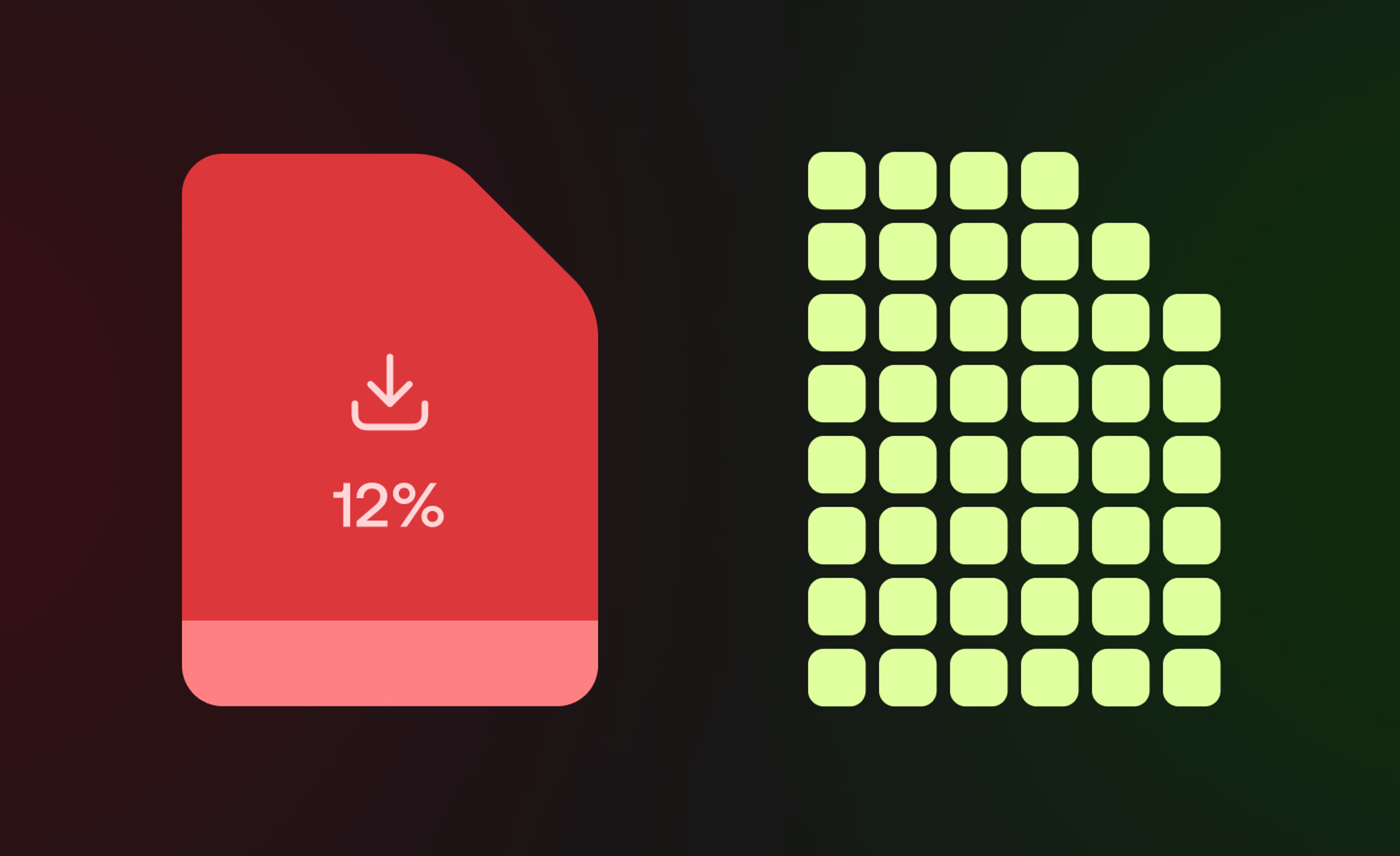
Product & news
Collaboration
Cloud storage
File streaming vs file acceleration: stop moving files
Discover where file acceleration solutions fall short for collaboration and how file streaming gives teams instant, direct access to cloud data from anywhere.
11 December 2025, 7 mins read

Product & news
Collaboration
Cloud storage
Why sync when you can stream? File streaming vs sync and share
Explore how sync and share tools disrupt large file workflows and how LucidLink’s file streaming platform delivers instant, secure file access from anywhere.
24 November 2025, 6 mins read

Collaboration
In the field
Madecraft’s post-production hacks for smooth workflows
Discover how Madecraft slashes hidden costs of post-production, boosting efficiency, saving time and keeping creativity flowing.
21 November 2025, 6 mins read
Join our newsletter
Get all our latest news and creative tips
Want the details? Read our Privacy Policy. Not loving our emails?
Unsubscribe anytime or drop us a note at support@lucidlink.com.